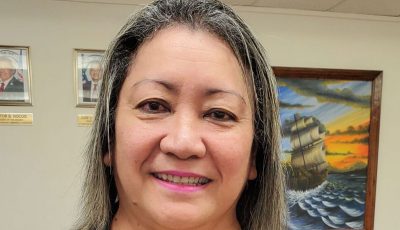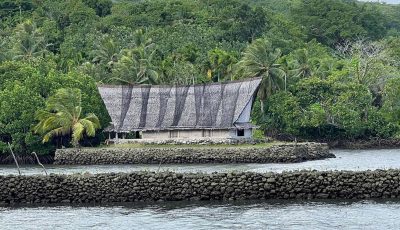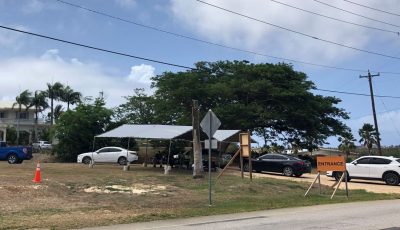WHO sets priorities in wake of Solomon floods
HONIARA—When the massive flood hit a small community in a palm plantation in Guadalcanal Province in Solomon Islands, the family of Samson Tokara trooped to the Okea evacuation centre to seek refuge. In the rush to the evacuation, he was not able to bring much of his belongings, but he grabbed the most important people in his life: his wife Jenlin and 2-month-old baby Samantha.
Samson’s family was just some of the 52,000 people affected by the flash floods that hit Honiara and the rest of Guadalcanal province on April 3-5, 2014. The government declared a state of emergency in Honiara and Guadalcanal provinces and has set up 32 evacuation centers that catered to the needs of more than 9,000 people.
“Our basic needs were provided in the evacuation center and I am thankful for the support provided to us by different organizations,” said Samson. “However, it was a temporary shelter and we needed to go home to clean our house and rebuild our lives. I have a baby and I need to make sure her needs are met.”
Riding a motorized farm vehicle borrowed from his relative, Samson and his family went back to their home on April 12.
Health response
The floods in Solomon Islands disrupted the delivery of health services in the capital city of Honiara and Guadalcanal Province. Although the basic life-saving services have been dispensed, the health concerns are huge and complicated.
The World Health Organization is closely working with the Ministry of Health and Medical Services at the central and provincial levels in coordinating the health response to this emergency and in ensuring that the health services provided by partners and other organizations go to where it is needed. WHO also assists the government in the development of the Humanitarian Action Plan for Health. As part of the Pacific Humanitarian Team, WHO leads the health cluster response and coordinates with partners in the provision of the United Nation-wide support.
Technical specialists from various parts of the world have flown in to Honiara to support MHMS in responding to health sector needs including preventive and curative services, public health, vector control, food safety and nutrition, strengthening surveillance system, conducting risk assessments, and risk communication. It also supported the MHMS in developing the health facility assessments tools and in conducting the health facility assessments.
Continuing health needs
Based on the initial results of the health assessment by WHO and MHMS, the principal health issues are lack of food, water, sanitation and hygiene facilities as well as food- and water-borne illnesses. People are also concerned with food safety, malnutrition, especially of infants and young children that could potentially lead to increased and more severe diseases.
The respiratory infections associated with overcrowding, especially acute respiratory infections in children are also a concern. Leptospirosis from exposure to rodent excreta or contaminated water; and vector-borne diseases, especially malaria and dengue are major health threats. Mental health and psychosocial services are also necessary.
Health priorities
Given the health issues, the immediate priorities are on the provision of nutritious food and safe drinking water. It is an immediate need to also provide appropriate sanitation, shelter, and other essential non-food items as well as provision of medicines and medical supplies.
In order to prevent possible outbreaks, it is critical to strengthen surveillance system for infectious diseases and implement measures to prevent vector-borne diseases. Keeping the public informed through enhanced risk communication to the public is also important.
“The health and nutrition needs of the people on-the-ground are significant, and the work involved is massive,” says Dr Audrey Aumua, Officer-in-Charge of the WHO Office in Solomon Islands. “WHO remains committed in working with the Government to ensure that health services are provided to people in evacuation centers, and those who are back in their homes.” (WHO)



























